New Ironclad Evidence of Atrocities Committed by Japanese Invaders
On November 29, the Memorial Hall of the Nanjing Massacre Victims (by Japanese Invaders) held the 2024 Conference of Newly Collected Relics and Historical Materials. Important relics and historical materials were unveiled, including the wartime diary of Eisaku Saijo, a soldier of the 13th Division of the Japanese Invaders; the investigative reportAbout Air Defense Facilities in Shanghai and Nanjing by Katsura Ishii, Chief of the Architecture Division of the Tokyo Metropolitan Police Department, along with the original documents of the investigation; and photographs illustrating the Japanese army's "sex slaves" system, known as the "comfort women" system.
Records of Looting and the Tragic Scenes of the Nanjing Massacre by Japanese Soldiers
The wartime diary of Eisaku Saijo, a soldier of the 58th Infantry Wing of the 26th Brigade of the 13th Division of the Japanese Invaders, spans from September 25, 1937, to January 8, 1938. The diary contains several entries detailing acts of looting by Saijo and his unit during their advance toward Nanjing. In the entries dated December 3 and 4, 1937, he wrote: (in Jiangyin) “...... went out in the morning to collect items, and at 4 p.m. the first squad set off first for the bivouac ......” and “After the changing of the guards at 5 p.m. we returned after having collected a number of items.” In his diary on December 20, he recorded: (In Zhenjiang) “...... After dinner, the three of us, Yumoto-kun, Masuda-kun, and I went out to collect a pig, seven chickens, and seven eggs. As it grew dark, we returned.”

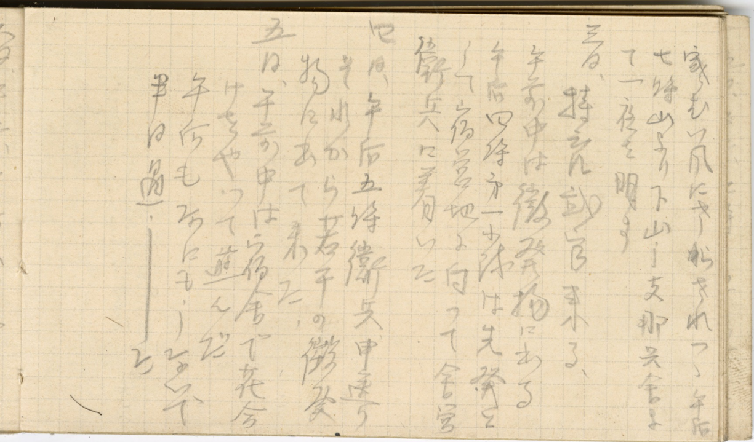
Wartime diary of Eisaku Saijo
The diary also notes Eisaku Saijo arrived in Nanjing on December 31, 1937, where he witnessed the aftermath of the massacre. He wrote in his diary on January 1, 1938, “After breakfast, under the command of the squad leaders, we went into Nanjing for a tour of the city. After wandering around, on the way back we took the wrong turn and arrived at Hanzhong Gate. We kept walking along the city wall for about eight kilometers, and then went back to our quarters, when it was already after five PM. What shocked me most was the mountain of corpses by the river outside the city....”
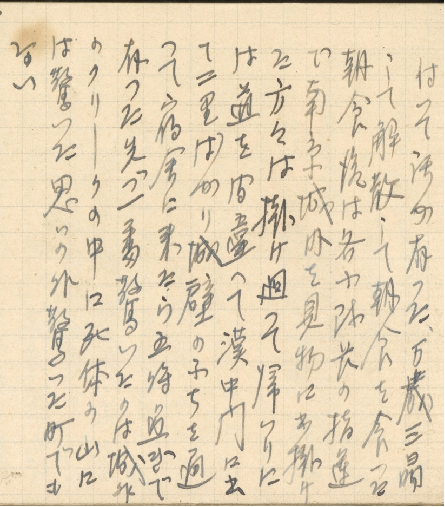
Wartime diary of Eisaku Saijo
The diary was collected with the help of Mr. Chen Kai from Shanghai and was authenticated and analyzed by the Memorial Hall in accordance with procedures. Wang Weixing, former director and researcher at the Institute of History of Jiangsu Provincial Academy of Social Sciences, believes that the historical value of this relic is very high. Wang Weixing said, "the diarist's troop invaded all the way to Nanjing, capturing Jiangyin, Zhenjiang, and other places successively, and part of the division was involved in the attack on Nanjing. Eisaku Saijo came to Nanjing with his troop after the fall of Nanjing. In his diary, he recorded the looting of Japanese invaders on their way to invade Nanjing, as well as the horrific aftermath of the Nanjing Massacre that he witnessed with his own eyes."
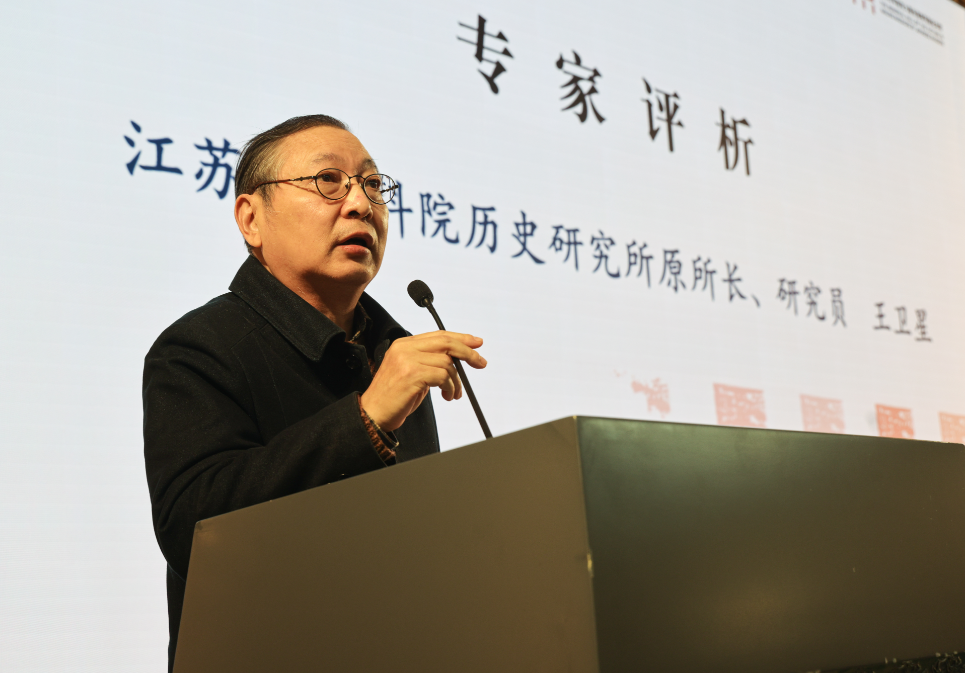
Wang Weixing
Wang Weixing also pointed out that, “After the fall of Nanjing, the Japanese invaders launched mass searches within and outside the city, searching for Chinese soldiers who had laid down their arms and ordinary civilians suspected of being soldiers, and even police officers within the Safety Zone. On December 16, 1937, the Japanese invaders took more than 2,000 police officers and civilians working for the International Committee for the Nanking Safety Zone to the edge of the Qinhuai River outside the Hanzhong Gate to carry out a massacre. This diary shows that as late as January 1, 1938, the bodies of these massacre victims were still piled up along the Qinhuai River outside Hanzhong Gate.”
Japanese investigative reports and original documents record “numerous corpses” in Nanjing and surrounding areas
A Japanese friend, Mr. Hitoshi Oto, helped the Memorial Hall in Japan to collect the investigative report,About Air Defense Facilities in Shanghai and Nanjing by Katsura Ishii (Chief of the Architecture Division of the Tokyo Metropolitan Police Department), as well as the original documents of the investigation, including various maps of the Chinese military's air defenses from Shanghai to Nanjing, outline of the air defense operations, the records of the air defense alarm sounding, and other original documents.
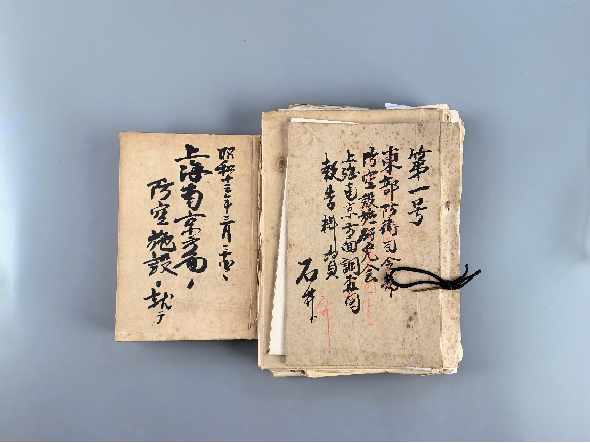
Investigation report,About Air Defense Facilities in Shanghai and Nanjingand the original documents of the investigation
This set of relics and historical materials shows that in late December 1937, Katsura Ishii was dispatched by the Japanese military to Shanghai, Nanjing and other places to investigate the situation of the China's air defense facilities and formed investigation materials and detailed reports. He passed through Changzhou, Jiangyin, Jurong and other places on his way, recording scenes of devastation: “Numerous bodies lined the road, and as we neared Nanjing, the density of corpses increased dramatically.” Upon his arrival in Nanjing, he documented:“Thousands of enemy soldiers were shot by us at the Xiaguan Pier, with their bodies bulging and floating on the surface of the river”. He gave a detailed description of the gruesome state of these bodies, such as “the necks were brilliantly cut off, leaving only a sliver of skin attached to the body, which was about a foot in length, and the arms and legs were nowhere to be found.” He even compared the tragic scene in Nanjing to the situation during the Great Kanto Earthquake in Japan: “I am notunfamiliar with dead bodies, but the sight of corpses mowed down by machine guns made me feel that this war must not be lost.”
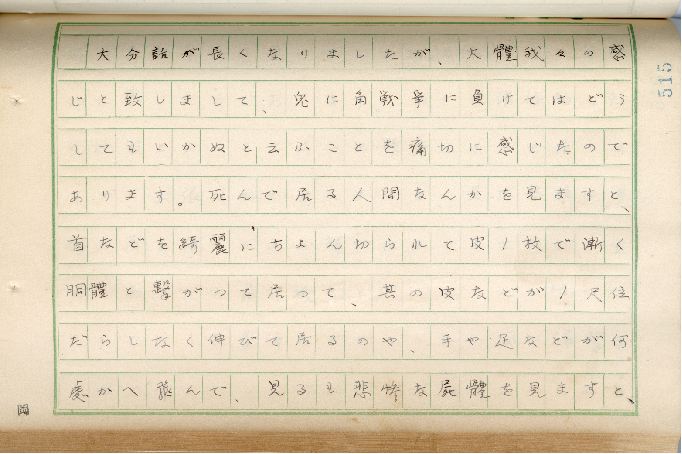
Investigation report,About Air Defense Facilities in Shanghai and Nanjingand the original documents of the investigation
Meng Guoxiang, a researcher at the Institute of National Heritage &International Peace, believes that "The purpose of Katsura Ishii's trip to China was to investigate and collect air defense information on the Chinese side, providing intelligence for Japan to expand its aggression. These documents record the tragic situation after the atrocities committed by the Japanese invaders seen by Katsura Ishii in Nanjing and other places from late 1937 to early 1938, which have high historical and cultural relic value.”

Meng Guoxiang
Japanese army’s photos confirmed Chinese soldiers and civilians were massacred in batches
Mr. Hitoshi Oto also helped the Memorial Hall collecting 324 photographs depicting the Japanese invasion and occupation of Nanjing and surrounding areas in 1937. These include images of:“The ruins of Chinese houses hit by artillery fire near Nanjing Station”, “Hanzhong Gate in Nanjing after the invasion by Japanese invaders”, “Nanjing Xiaguan Railway Station after the invasion by Japanese invaders.” After research, this set of photos is related to the 15th Wing of Independent Field Heavy Artillery under the direct jurisdiction of the Japanese Shanghai Expeditionary Force. The 15th Wing of Independent Field Heavy Artillery landed in Shanghai on September 26, 1937, and participated in the battle for Shanghai. Thereafter, the Wing invaded Suzhou, Wuxi, Changzhou, and Nanjing, and participated in the Nanjing Massacre after the fall of Nanjing.
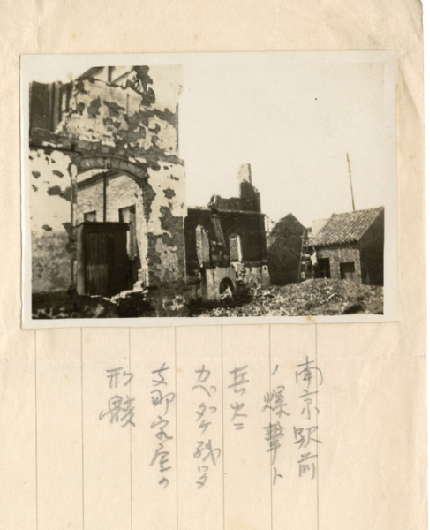
Remnants of Chinese houses hit by artillery fire in front of Nanjing Station
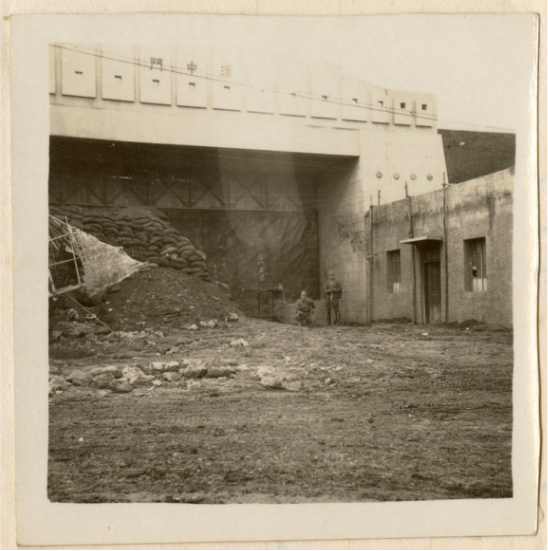
Hanzhong Gate in Nanjing after the invasion by Japanese invaders
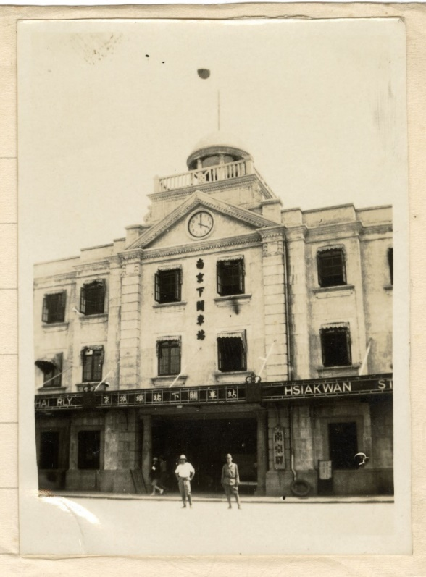
Nanjing Xiaguan Railway Station after the invasion by Japanese invaders
Among these photographs, there is a photo with the words “Prisoners’ Shelter”, which shows a building with a background similar to the background of the relevant photos in the Japanese issues of Commemorative Portrait Photography of the China Incident: Showa 12, 13, 14 Years, Setagaya Street Troops and Pictorial History of the Modern Century, published in 1953.
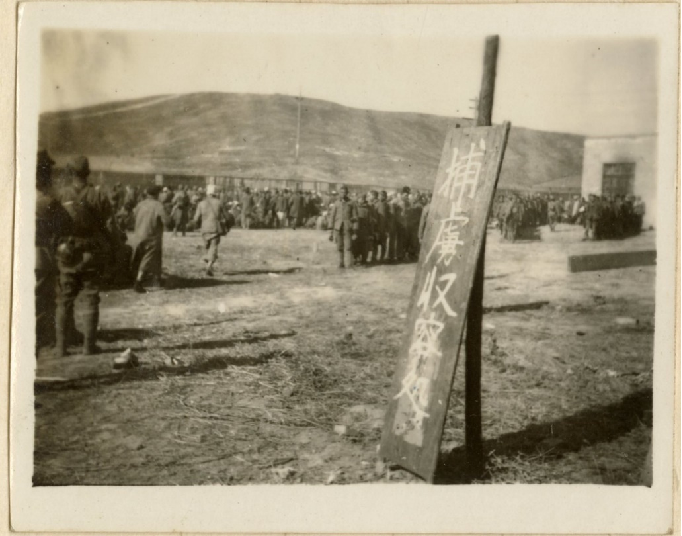
A photo with the words “Prisoners’ Shelter”
After comparison, it was found that these photographs depict the same location, taken from different angles and at different times, namely the “Prisoners' Shelter” located in Xianhemen Town on the eastern suburb of Nanjing.Kesago Nakajima, division commander of the Japanese 16th Division, recorded in his diary, “There were about 7,000 to 8,000 people gathered near Xianhemen Town. In addition, people kept coming to surrender. A large ditch is needed to deal with the above 7,000 to 8,000 people, but it is difficult to find one. It is intended to divide them into small groups of one or two hundred people and lead them to the proper place to deal with.” This further indicates that many Chinese soldiers and civilians captured at the Xianhemen “Prisoners' Shelter” were ultimately massacred in batches.
Photos and historical materials confirmed the JapaneseArmy's "Sex Slaves" System
Mr. Liu Changyan and his friends from Zhuhai helped the Memorial Hall collect a number of photos and historical materials reflecting the Japanese army's "sex slaves" system, including blueprints of the architectural renovation of the Shanghai “Hainaijia” “sex slaves” station and photos of the “sex slaves” stations set up by the Japanese invaders in Suzhou, Taiyuan, and Gubeikouying, further confirming the “sex slaves” system implemented by the Japanese invaders in China.
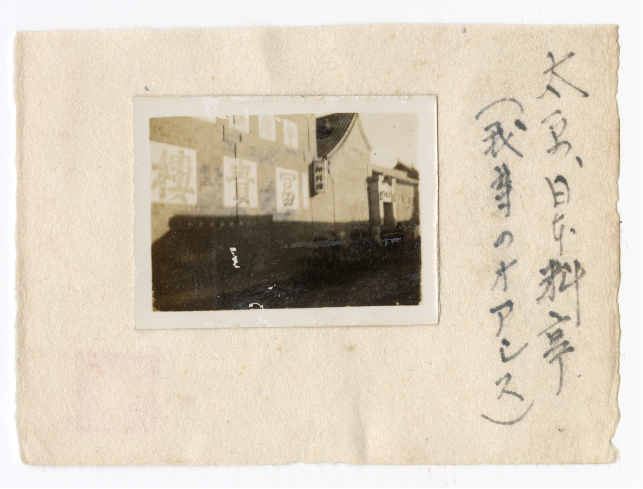
Fuguilou“Sex Slaves” Station established by Japanese army in Taiyuan
There is a historical document which is the original document reflecting the logistical situation of the Japanese Army by Sgt. Tanakiin the Sixth Hospital of the Japanese Kwantung Army. This historical document records the food rations for personnel and horses, medical treatment for officers and soldiers, etc., in which there is a directory of "sex slaves". This directory is medical examination forms for "sex slaves" in Japanese field hospital. It includes a directory of "sex slaves" with details such as their ethnicity, assigned house numbers, stage names, real names, and ages. Among them, there were 12 Chinese "sex slaves", with the youngest being 18 years old and the oldest being 36 years old.
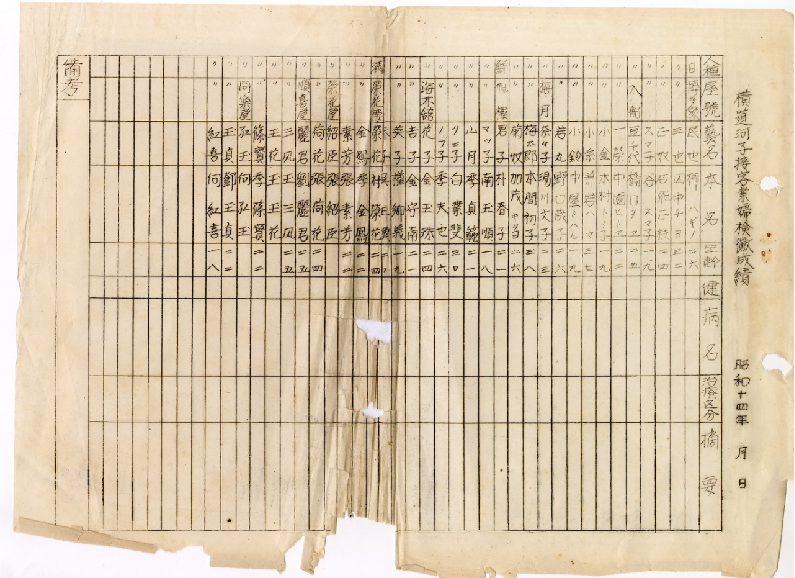
Original document reflecting the logistical situation of the Japanese army by Sgt. Tanaki in the Sixth Hospital of the Japanese Kwantung Army
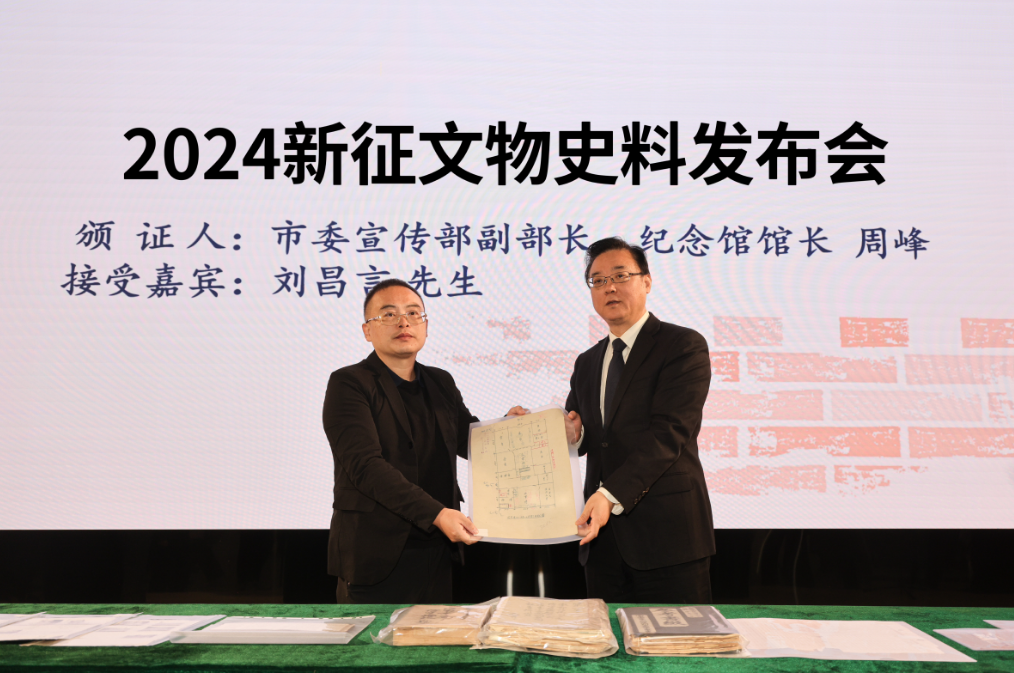
Donor Liu Changyan is handing over thecollection of cultural relics and historical materials to Zhou Feng, Director of the Memorial Hall
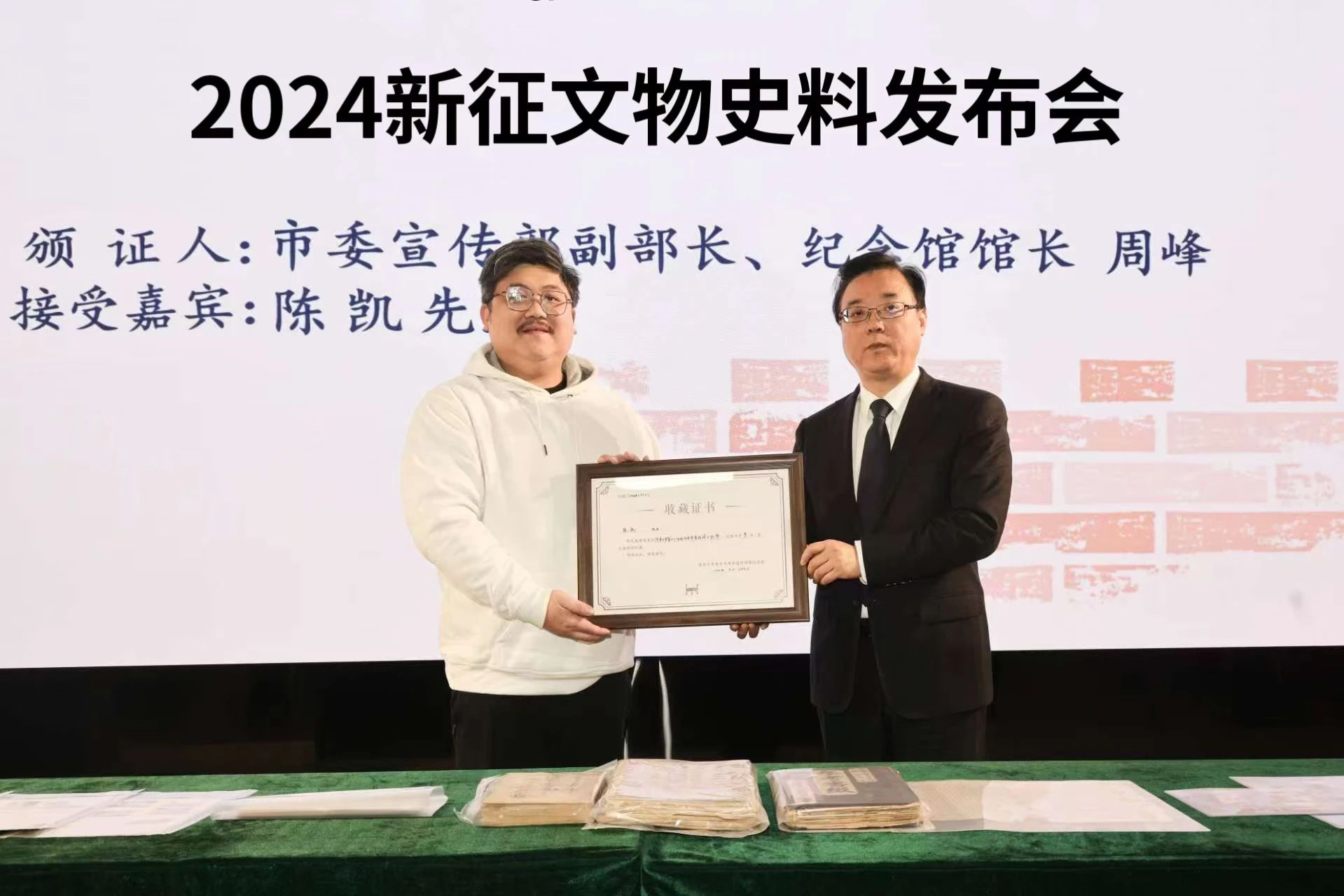
Zhou Feng, Director of the Memorial Hall, is presenting the collection certificate to the Donor Chen Kai

